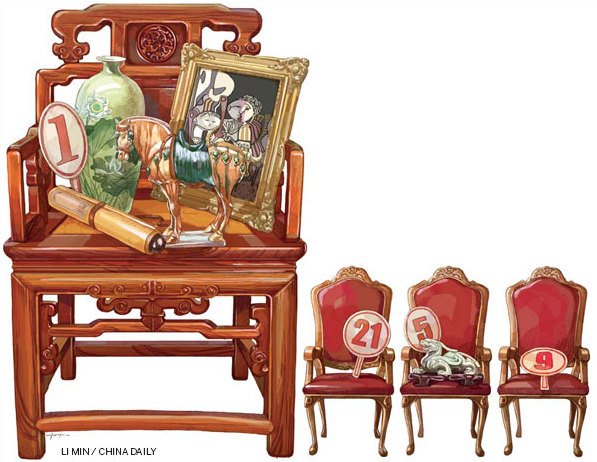
Demand from wealthy Chinese investors keeps world art market ticking over, Li Xiang reports
When Chinese conglomerate Dalian Wanda Group paid a record-breaking $28.2 million for a Picasso painting at a Christie's auction last month, more than double the high-end estimate for the artwork, it showed that not only is the art market doing well in China, but also growing in appeal as a haven for wealthy investors.
Unlike most of the other arms of the luxury trade, art investments have always been a roller-coaster ride for investors. High acquisition, maintenance costs and unsteady demand have prompted several wealthy investors to stick to havens such as gold and property.
All of that seems to be changing now, it seems, judging by the steady stream of Chinese buyers thronging the flea markets, antique shops and high-end auction houses of Paris, London and various other European art markets. The buying patterns are also varied, ranging from imperial porcelain vases, bronze Buddha statues, traditional Chinese painting and calligraphy and, in some cases, masterpieces by renowned artists.
The robust demand also indicates that demand for art investment has not waned in China, experts say, although the Chinese art market suffered an unexpected sales contraction last year.
"We have seen the number of Chinese clients double over the past year. More than 90 percent of the visitors at the pre-auction exhibitions of Asian art are from Asia," says Isabelle Bresset, associate director at Artcurial, a leading French auction house.
Bresset and other experts feel that part of the reason why wealthy Chinese investors are now making most of their purchases in markets such as Europe and the US is because of the widespread counterfeits and rampant market manipulations in China's art market.
However, some experts feel the uncertain financial conditions in Europe and other developed markets offer an excellent opportunity for Chinese investors to find good bargains at reasonable prices. The real benefit, experts say, is the safety and authenticity that mature art markets such as Europe can provide to investors.
Yet another benefit of the Chinese demand is the growing trade in Asian artwork and antiques across Europe, as seen in the increasing number of galleries and studios offering Asian collections for sale.
"The steady growth of the Asian art market is perhaps one of the most important trends in the global art market during the past decade," says Catherine Delvaux, head of communication services at French auction house Drouot. "Everyone in the market, including auctioneers, dealers and fair organizers, is interested in touching base with wealthy Chinese collectors."
The growing presence of Chinese buyers in the European art market has also inflated prices for Asian artwork prices across Europe, particularly for Chinese art, because most of the collectors are focused on products from China, experts say.
"The growing demand for Chinese art has resulted in sharp price spikes," says Titia Vellenga, the representative of the European Fine Art Fair, an annual event in the Netherlands that brings together arts and antiques from several countries.
We recommend:
